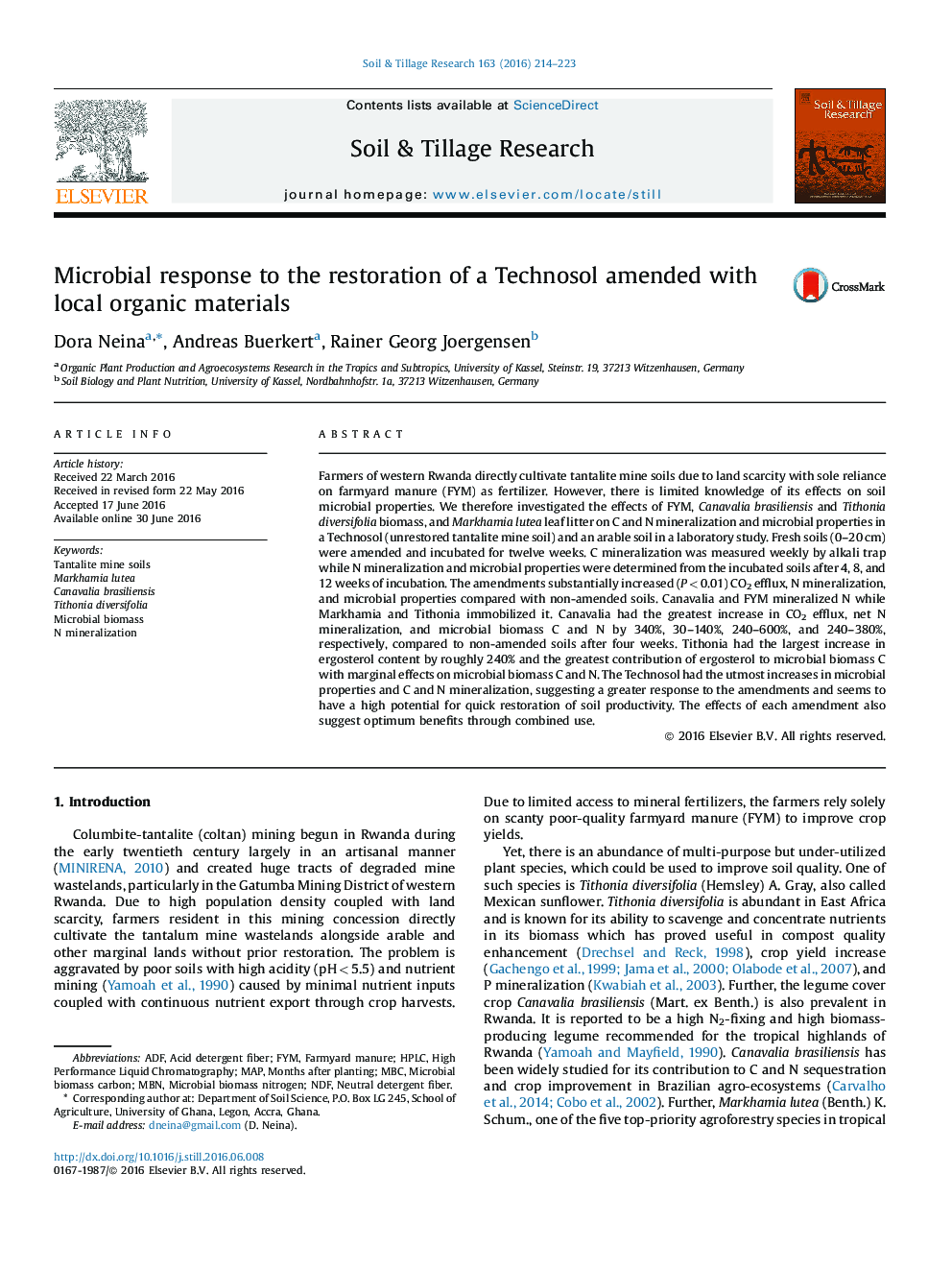| Article ID | Journal | Published Year | Pages | File Type |
|---|---|---|---|---|
| 305372 | Soil and Tillage Research | 2016 | 10 Pages |
•Canavalia biomass substantially increased microbial biomass and activity.•The application of Markhamia leaf litter and Tithonia biomass immobilized nitrogen.•The Technosol showed higher response to the amendments compared to an arable soil.•The amendments showed a potential for optimum benefits through integrated use.
Farmers of western Rwanda directly cultivate tantalite mine soils due to land scarcity with sole reliance on farmyard manure (FYM) as fertilizer. However, there is limited knowledge of its effects on soil microbial properties. We therefore investigated the effects of FYM, Canavalia brasiliensis and Tithonia diversifolia biomass, and Markhamia lutea leaf litter on C and N mineralization and microbial properties in a Technosol (unrestored tantalite mine soil) and an arable soil in a laboratory study. Fresh soils (0–20 cm) were amended and incubated for twelve weeks. C mineralization was measured weekly by alkali trap while N mineralization and microbial properties were determined from the incubated soils after 4, 8, and 12 weeks of incubation. The amendments substantially increased (P < 0.01) CO2 efflux, N mineralization, and microbial properties compared with non-amended soils. Canavalia and FYM mineralized N while Markhamia and Tithonia immobilized it. Canavalia had the greatest increase in CO2 efflux, net N mineralization, and microbial biomass C and N by 340%, 30–140%, 240–600%, and 240–380%, respectively, compared to non-amended soils after four weeks. Tithonia had the largest increase in ergosterol content by roughly 240% and the greatest contribution of ergosterol to microbial biomass C with marginal effects on microbial biomass C and N. The Technosol had the utmost increases in microbial properties and C and N mineralization, suggesting a greater response to the amendments and seems to have a high potential for quick restoration of soil productivity. The effects of each amendment also suggest optimum benefits through combined use.
